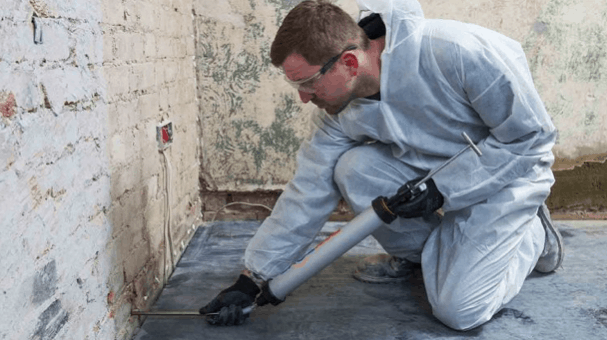Damp is the greatest nightmare for almost every homeowner. It can take many different forms and manifest itself in the least suspicious areas, sending the inhabitants into sheer terror and panic. It can gradually destroy any building it has taken hold of, so measures to take control of the situation are a must.
Unfortunately, many companies who specialize or at least claim to specialize in damp proofing and fixing rotten wooden structures might lead you on, selling you expensive fixes for entirely different problems than the ones you are having. If you’d like to avoid getting ripped off or sold a useless solution for a wrong or non-existent problem, read on. Following are some tips on how to tell the real professionals apart, as well as pay for the services you really need.
First, Do Your Homework
Before you call anybody to come over and inspect your house, sit down and do some preliminary research on your own.
Damp can be divided into a few common types that usually plague homes everywhere. They are rising damp, condensation and penetrating damp. Each one requires a completely different treatment from the other two, so it is very important to determine which one you are dealing with. If you learn enough to be able to identify your problem, you will successfully avoid unscrupulous contractors trying to sell you a far more expensive and inadequate solution.
Hire Someone With Lots Of Expertise
Probably the most important thing to do is look for a specialist who works with damp issues on a daily basis, so that they can properly diagnose and tackle yours, without fail. The reason – damp is a really tricky matter, so in order to deal with it the first time, background knowledge is a complete must.
Davidson’s damp proofing specialists share their observations that many people go for general building contractors and expect them to cover every detail of a home repairs job. These contractors might be able to do a pretty decent job in terms of the repair element but they would hardly have the expertise or capacity to detect and remove the root cause of the damp problem or rotting wood or whatever else might have resulted in the problem. If that’s not addressed, you will simply be throwing money to the wind, watching the feared damp return with a vengeance once the home fixing is over.
Be Wary Of Product Affiliations
It is a good idea to ask your potential damp proofer if they have affiliate relationships with certain product manufacturers. Why? Because while some people do sign up to make sure a certain brand of material is used on their home job, if you don’t have such preferences, you might be at risk of getting convinced you need a certain job done on the house when the situation couldn’t be further from the truth, really.
If you are not an expert on damp yourself and have no idea what might be causing your problem, look into independent contractors in order to avoid unwanted affiliate marketing and a shameless rip-off sometimes. Ask them a lot of questions to see how they intend to approach your case. You can find a good damp FAQ to help you with that at https://www.which.co.uk/reviews/damp/article/dealing-with-damp/faqs-dealing-with-damp. Call at least several contractors to take a look and diagnose the issue. Three is a good number. Do not fall below that. Compare surveys afterwards and see if they match.
Things To Watch Out For In A Survey Report
In order to avoid deliberate misdiagnosis of your damp problem by an unscrupulous contractor, look out for specific signs to prepare for the inspection. Here is an exhaustive list that will help you analyze and distinguish between different problems. Probably the most important sign is the presence or absence of black spot mould. If you see that, you can be absolutely sure you are not dealing with rising damp. You either have a condensation problem, or a water leak somewhere in the house, which is causing the mould.
Also, keep in mind that rising damp can’t possibly get to the first floor. It will always stick to the ground one, up to a meter high. Anything above that is not rising damp. Another misconception is that wet rot to skirting has the same origin. It is actually due to the wood and masonry coming into contact. This often results in a fungal decay in the timber and it starts to rot. Be careful if someone is trying to convince you this is rising damp, as they are surely trying to sell you an expensive solution to a problem that you don’t have.
The Editorial Team at Healthcare Business Today is made up of skilled healthcare writers and experts, led by our managing editor, Daniel Casciato, who has over 25 years of experience in healthcare writing. Since 1998, we have produced compelling and informative content for numerous publications, establishing ourselves as a trusted resource for health and wellness information. We offer readers access to fresh health, medicine, science, and technology developments and the latest in patient news, emphasizing how these developments affect our lives.










Very Nice Article. People are so confused when to choose the Right Timber Treatment And Damp Proofing Companies for their home. Through your artilce points are cleared now.Thanks for sharing your information.